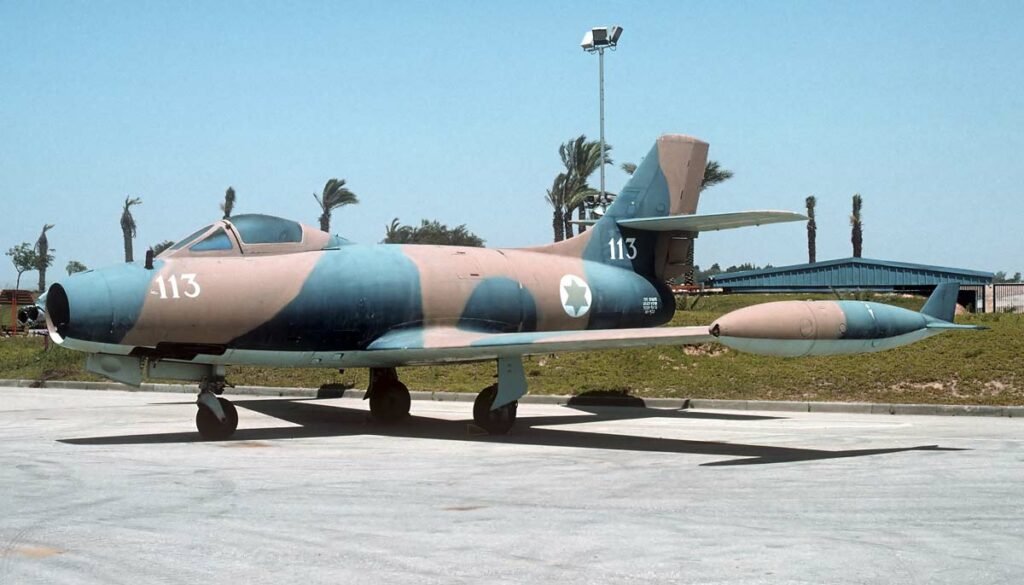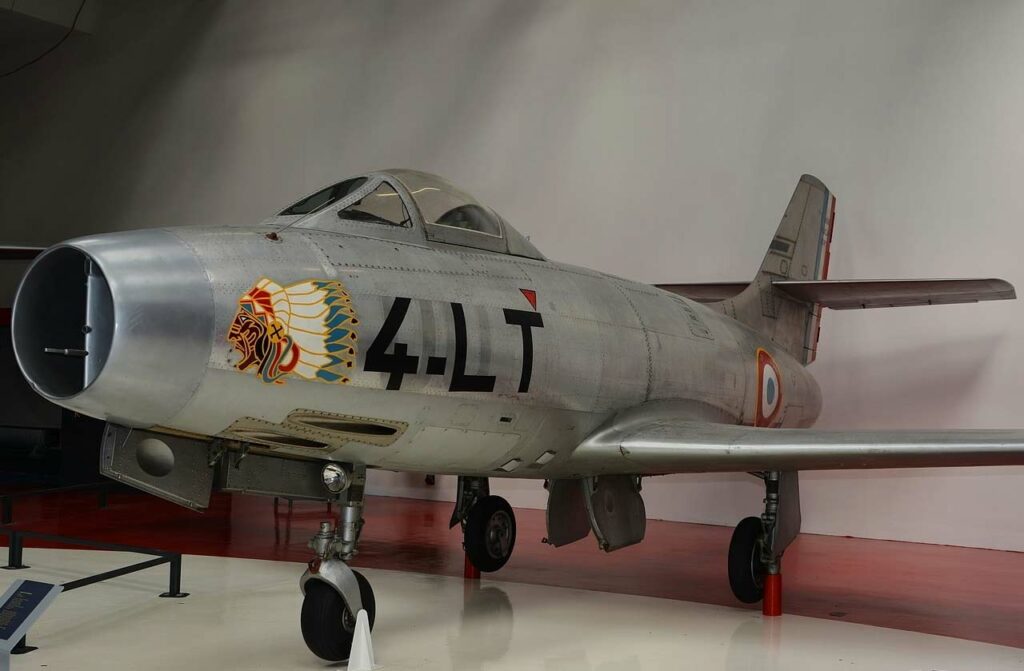The Dassault Ouragan, France’s first post-WWII jet fighter, combined robust design with reliable performance in various military roles.
The Dassault Ouragan was a noteworthy French jet fighter and the country’s first in the post-World War II era. Known for its versatility, the Ouragan served in multiple air forces and demonstrated France’s renewed aerospace capabilities. The development of the Ouragan was a crucial step in modernizing France’s military aviation and re-establishing its aerospace industry after World War II. It marked the transition from propeller-driven to jet-powered fighter aircraft.

History of the Development of the Dassault Ouragan
Post World War II, France faced the urgent need to rebuild its military strength and aerospace industry. In this context, the development of a modern, jet-powered fighter aircraft was imperative to keep pace with advancements in aviation technology.
Dassault Aviation, led by Marcel Dassault, initiated the Ouragan (Hurricane) project to meet these needs. The objective was to design a versatile, reliable, and efficient jet fighter that could match the performance of contemporary aircraft from other nations.
The Ouragan program was launched in the late 1940s, and the aircraft first flew on February 28, 1949. This milestone was significant for France, marking its entry into the era of jet fighters and demonstrating its capability to develop advanced military aircraft independently.
The Dassault Ouragan did not receive a specific NATO nickname, as it was predominantly operated by the French Air Force and other non-NATO members.
Design of the Dassault Ouragan
The design of the Dassault Ouragan represented a blend of traditional and innovative features. It had a straight wing, a common feature in early jet aircraft, and was powered by a Rolls-Royce Nene 104B turbojet engine, producing around 2,240 kgf of thrust.
The Ouragan was notable for its robust construction. It had a length of 10.73 meters and a wingspan of 13.16 meters. The aircraft’s design emphasized ease of maintenance and operation, with a spacious cockpit and good visibility for the pilot.
One of the limitations of the Ouragan was its straight-wing design, which restricted its speed and maneuverability compared to swept-wing designs that emerged later. However, its sturdy construction made it a reliable platform for various military roles.
Performance of the Dassault Ouragan
The Ouragan’s performance was competitive for its time. It could reach a top speed of approximately 940 km/h and had a service ceiling of 13,000 meters. The aircraft’s range was about 920 kilometers, making it suitable for short to medium-range missions.
In comparison to contemporaries like the British Hawker Hunter and the Soviet MiG-15, the Ouragan was less agile and slower, primarily due to its straight-wing design. However, it excelled in stability and ease of control, which were crucial for various operational roles.

Military Use and Combat of the Dassault Ouragan
The Ouragan was equipped with an armament of 20 mm cannons and could carry bombs and rockets, making it suitable for air-to-air combat and ground attack missions.
The aircraft saw combat service with the French Air Force in the Algerian War and the Suez Crisis, where it performed ground attack and reconnaissance missions. Its rugged design and reliable performance made it effective in these roles.
The Ouragan was also used by air forces of other countries, including Israel, India, and El Salvador. In Israeli service, it saw action during the Suez Crisis, and in India, it was used in the Indo-Pakistani War of 1961.
The aircraft was eventually phased out as newer, more advanced jet fighters like the Dassault Mirage series entered service. The Ouragan’s retirement marked the end of an era for the first generation of French jet fighters.
The Dassault Ouragan holds a significant place in aviation history as France’s first successful post-war jet fighter. Its development marked the resurgence of the French aerospace industry and contributed to the evolution of military aviation in the mid-20th century. While it was eventually surpassed by more advanced aircraft, the Ouragan’s legacy as a versatile and reliable fighter remains notable.
Back to the Fighter Jet section.